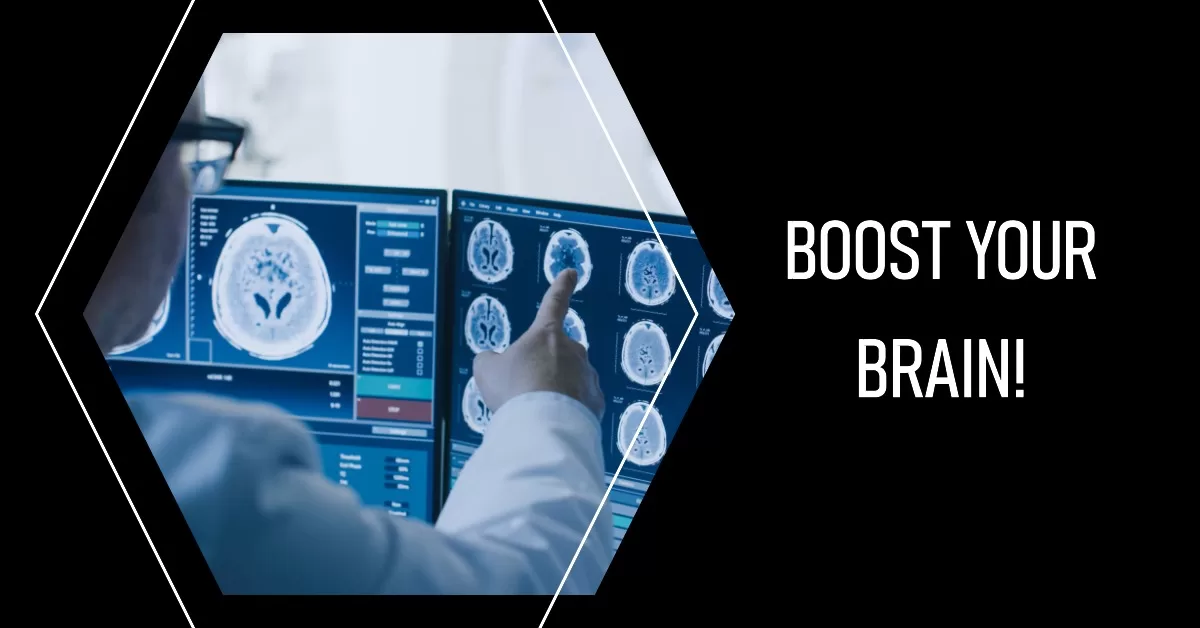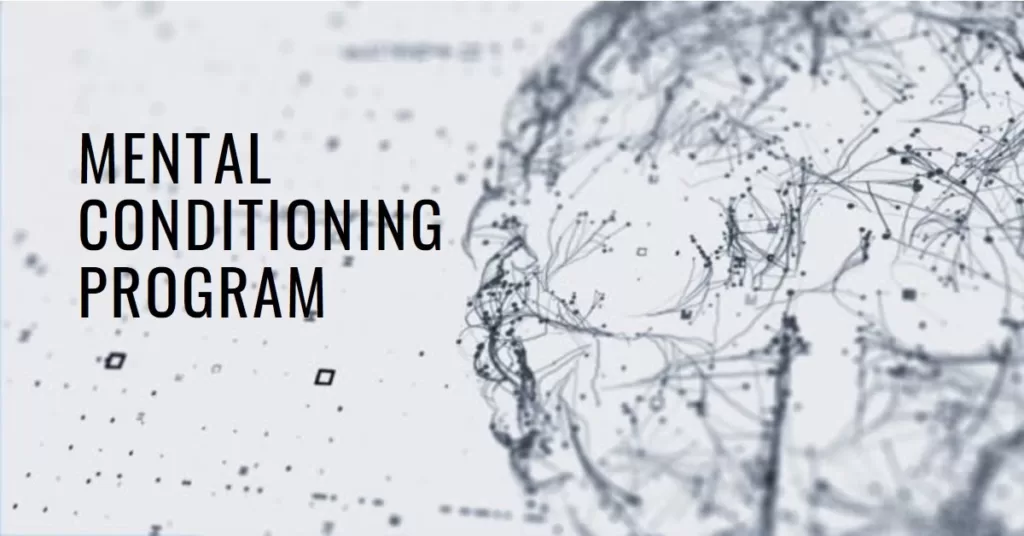Mental conditioning is the process of developing a program to foster mental health and wellbeing. It involves creating goals that are achievable, as well as incorporating relaxation techniques and affirmations. This article will discuss how to create a personalized mental conditioning program in order to help one achieve their desired outcomes.
The steps for creating this type of program include identifying one’s needs, developing a plan, setting realistic goals, creating a schedule, incorporating affirmations and visualizations, practicing relaxation techniques, tracking progress, and sticking with the plan. Each step is essential for success when attempting to create an effective mental conditioning program that will enable individuals to reach their desired objectives. The aim of this article is to provide readers with the tools necessary for constructing such a program that can be tailored specifically toward their individual needs.
Table of Contents
Identifying Your Needs
Identifying and understanding individual needs is an essential step in developing an effective plan for improving mental wellbeing. Individuals must first identify the areas of their own life that they feel need to be addressed and why they believe this to be true. This could include things such as stress or anxiety, self-confidence, or even a feeling of being overwhelmed by day-to-day tasks. It is important to take an honest look at what you are feeling and how it may be affecting your overall wellbeing before creating a personalized mental conditioning program.
Once the individual has identified their struggles, they can begin to develop a plan to help address these issues in order to reach their desired goals. It can be done by setting realistic expectations and breaking them down into small steps. This will allow for more manageable progress which can lead to increased motivation and satisfaction from seeing the results of those small victories along the way. It can also be beneficial to monitor any progress made throughout the process – this could involve tracking daily habits or noting any changes in mood or emotions – so that improvements can be seen over time as well as identifying any potential roadblocks that may arise during the journey toward greater mental fitness.
To ensure lasting change, individuals should also focus on cultivating healthier habits and outlooks when engaging with both internal dialogues as well as external situations like relationships with friends and family members. This could involve actively seeking out activities or conversations that bring joy while limiting exposure to negative influences such as toxic people or unhealthy lifestyle choices like smoking or excessive drinking of alcohol.
Creating a personalized mental conditioning program requires taking an honest look at one’s current state of mental health, setting achievable goals, monitoring progress over time, and integrating healthy habits into everyday life; all components are necessary for achieving lasting change and improving your wellbeing.
Developing Your Program

The development of a personalized mental conditioning program requires knowledge of the principles of mental conditioning as well as identifying and utilizing the right resources. Understanding these principles is essential in order to create an effective program that meets individual needs. Finding the necessary resources can be a challenge, but with careful research and consideration, one can identify the most appropriate materials for their program.
Understanding the Principles of Mental Conditioning
Analyzing the fundamentals of mental conditioning enables individuals to develop a comprehensive strategy for self-improvement. Mental conditioning is a process that seeks to shape an individual’s behavior and thought patterns to help them reach goals and objectives. This process involves various steps, such as recognizing what needs improvement, establishing specific short-term and long-term goals, creating strategies for achieving those goals, anticipating potential obstacles, and adapting effectively when faced with challenges. In order to be successful in this endeavor, it is important that individuals understand how their beliefs, thoughts, emotions, and behaviors are linked together and how they can be used as tools in the development of a personalized mental conditioning program.
Understanding the principles of mental conditioning will enable individuals to recognize which behaviors should be adopted or rejected. For instance, some habits may need to be eliminated while others may need reinforcement; similarly, certain thought processes may need adjustment based on immediate circumstances or long-term ambitions. By understanding these principles individuals can gain clarity on what actions they need to take in order to succeed in reaching their goals. Additionally, by becoming familiar with the different techniques available for improving mental performance such as meditation and cognitive behavioral therapy (CBT), individuals can create an effective personalized program tailored to their own needs and objectives.
Finding the Right Resources
Finding the appropriate resources is essential to developing an effective plan for achieving one’s goals. When creating a personalized mental conditioning program, individuals need to seek out reliable sources of information on the principles and techniques of mental conditioning. This includes exploring books, articles, and online videos from qualified professionals in the field. It may also be beneficial to consult with a licensed psychologist or therapist who is knowledgeable about mental health strategies that can help support one’s overall wellbeing.
To ensure success with a personalized mental conditioning program, consider the following:
- Identify trusted sources of information on mental conditioning techniques
- Investigate different approaches to addressing challenges associated with personal development
- Consult with experts in the field such as coaches, psychologists, or therapists when needed
- Establish realistic goals and expectations for each phase of the program
- Regularly evaluate progress and adjust tactics if necessary
Setting Realistic Goals
Assessing realistic goals is an important step in developing an effective mental conditioning plan. Setting achievable targets is a vital component of success due to the fact that it can ensure progress toward the desired outcome. By having a clear objective, individuals are better able to recognize when they have achieved their goal and can therefore track their progress over time. Furthermore, realistic goals help to motivate people as they are more likely to make incremental progress rather than becoming overwhelmed by large-scale objectives. For instance, if someone wants to improve their self-esteem, setting smaller goals such as attending social events or engaging with others on a regular basis can lead them closer to achieving this larger goal.
In order for individuals to set realistic goals, they must first assess what areas of their life need improvement and then determine how best these could be addressed. It is also useful for them to identify any existing skills or resources that can be used in order to facilitate change. Additionally, it is important that individuals create short-term and long-term objectives so that they can evaluate whether or not they are making meaningful progress over time. Establishing deadlines and assigning specific tasks may also be beneficial in ensuring that individuals stay on track and remain motivated throughout the process of achieving their goals.
Creating a timeline of expected outcomes allows people to measure their successes which helps boost morale and encourages commitment to achieving the overall aim of mental conditioning program development by providing feedback on how well individuals are doing at each stage of development; this allows them to adjust expectations accordingly without becoming discouraged by slow progress or overly ambitious plans that cannot be realized quickly enough. Having milestones along the way also enables people to break down complex tasks into manageable chunks which makes it easier both mentally and emotionally to cope with whatever challenges arise during the process of reaching those objectives.
It is also essential for people developing mental conditioning plans to pay attention to potential obstacles such as lack of resources or inadequate support from family/friends so that these issues can be addressed before embarking upon any changes in behavior or attitude. Allowing for setbacks while still maintaining focus on larger objectives ensures greater motivation when faced with difficulties as well as providing flexibility when tackling complex challenges associated with personal growth processes involving mental conditioning programs.
Creating a Schedule
Once realistic goals have been identified, creating a schedule can help to ensure that progress is made toward achieving these objectives. Scheduling activities will not only provide structure but also serve as a visual reminder of the steps needed to reach one’s goal. In addition to that, scheduling can help prioritize tasks and prevent procrastination.
Use the following sequence when developing your schedule:
- Specify your goals: It is important to set realistic expectations in order to avoid feeling overwhelmed or discouraged by unachievable objectives. Brainstorm your ideas, pick the realistic ones, and decide which of them are going to be your main objectives.
- Define specific tasks and activities: Identify what actions must be taken in order to achieve each goal. This includes breaking down large projects into small steps, prioritizing them, and setting deadlines for each task.
When developing a schedule, it is also beneficial to consider personal preferences such as the time of day when energy levels are highest or periods when distractions are at their lowest levels – this is why taking breaks throughout the day helps maintain motivation and focus while preventing burnout. Furthermore, having an accountability partner who provides support and encouragement can help keep one on track with their goals and stay motivated during challenging times.
Scheduling activities for mental conditioning requires careful consideration of personal goals and preferences so that progress can be made without becoming overwhelmed or discouraged by unrealistic expectations or too much pressure from external sources like peers or family members. With thoughtful planning, individuals will be able to create an effective roadmap that leads them closer to achieving their desired outcome in a sustainable manner over time.
Incorporating Affirmations and Visualizations
Incorporating affirmations and visualizations into a mental conditioning program can help individuals stay motivated and focused on their goals. Affirmations are positive statements or mantras that people repeat to themselves, often in order to change their thought patterns or behaviors. They can be used as part of an individual’s daily routine to reinforce positive thinking and outlooks. Visualizations are mental images created with the goal of focusing on a desired outcome. This could include picturing success, health, or achievement. Both affirmations and visualizations have been found to reduce stress levels, increase motivation, and improve focus when practiced regularly.
The key to achieving successful results with affirmations is repetition: repeating the same statement multiple times throughout the day helps create new neural pathways in the brain that eventually become habitual thought patterns over time. Individuals should also make sure to choose phrases that align with their desired outcome; selecting words that embody what they wish to achieve makes them more powerful.
Similarly to affirmations, visualization techniques work best when done consistently over time; picturing success repeatedly helps to create a connection between the present moment and eventual outcomes not yet achieved. This technique should also be experienced as vividly as possible – including details such as colors, smells, and sounds – in order to make it feel real in one’s mind. For example, if someone wanted better health they might visualize themselves running through a grassy field with ease and joy while feeling healthy energy radiating from within themself.
When incorporating these techniques into one’s mental conditioning program it is important for individuals to find what works best for them by experimenting until they find something that resonates deeply in their hearts and minds. It is also beneficial for individuals to write down their thoughts after doing either type of exercise so they can track progress over time and determine whether or not certain techniques are more effective than others for meeting specific goals.
Practicing Relaxation Techniques

Practicing relaxation techniques can help individuals reduce stress and improve focus. Relaxation methods, such as deep breathing exercises, progressive muscle relaxation, guided imagery, and meditation all work to promote a sense of calmness and clarity. By engaging in these activities regularly, one can become more attuned to their body’s physical responses to stimuli and better prepared to manage stressful situations.
- Deep breathing exercises involve inhaling deeply and then exhaling the breath slowly while focusing on the sensations of the air entering and leaving your body.
- Progressive muscle relaxation is a two-step process where you tense and then relax each muscle group from head to toe in succession.
- Guided imagery uses visualization techniques to create tranquil images that encourage inner peace by calming the mind and spirit.
- Meditation incorporates many of these elements into a practice that involves focusing on an object or sound while letting go of thoughts that cause tension or anxiety.
When beginning any type of relaxation technique it is important to find a comfortable environment with minimal distractions so that you can fully focus on your practice without outside interference or interruption. It is also beneficial to set aside regular time for your practice as well as have realistic expectations about how long it will take before you experience notable results from your efforts; progress will come with consistency over time but not necessarily right away. If at any point during your practice, you feel overwhelmed it may be helpful to focus on smaller goals within the activity rather than trying to complete an entire session all at once; this approach allows for more gradual progress which may be easier for some people cope with emotionally as they are learning new skillsets or coping mechanisms that require patience and dedication in order for them take root successfully within their lives. Ultimately, the key is finding what works best for you when creating a personal mental conditioning program tailored specifically around your individual needs and preferences so that it becomes something enjoyable rather than just another task needing completion daily routine every day
Tracking Your Progress
Regularly tracking progress when engaging in relaxation techniques is an effective way to monitor and evaluate the results of one’s efforts. Keeping a record of one’s experiences can provide valuable insight into how well the techniques are working and what adjustments need to be made if necessary. In addition, it can help identify any underlying issues that may be contributing to stress or anxiety. Documenting each step taken in the relaxation process makes it easier to review and reflect on any changes or improvements over time.
Tracking progress also allows for more accurate comparisons between different strategies or techniques. It is possible to measure results through objective criteria such as heart rate, blood pressure, physical responses, etc., making it easier to quantify the impact of relaxation activities. Subjective measurements such as mood, perception of physical sensations, or ease of sleep can also be tracked over time to gauge the effectiveness of various approaches.
The ability to compare data over multiple sessions provides a better understanding of which methods are most beneficial for achieving desired outcomes. Furthermore, tracking progress creates an opportunity for positive reinforcement by highlighting areas where significant progress has been made and reinforces motivation for continuing with the program. Regular reviews provide reassurance that efforts are paying off and can help set realistic goals by providing feedback on performance levels or difficulty encountered in certain activities.
Finally, tracking progress helps identify potential problems early on so that they can be addressed quickly before they become more serious issues requiring additional workarounds or intervention from outside sources. This not only helps avoid potentially damaging scenarios but also ensures a smoother transition from initial attempts at relaxation exercises all the way through the successful implementation of a personalized mental conditioning program.
Sticking With Your Program
Maintaining a consistent approach to relaxation techniques is key to achieving long-term success and reducing stress levels. Any personalized mental conditioning program requires dedication, effort, and motivation on the part of the individual in order to be effective regardless of how well it has been programmed. This can be challenging when faced with overwhelming amounts of stress or fatigue that can arise from day-to-day living. However, if one takes the time to focus on their goals and break them down into achievable steps, it becomes easier to stay motivated and stay with the program.
Creating tangible short-term goals is an important part of sticking with a mental conditioning program. These should be realistic goals that can be achieved within a reasonable timeframe so that progress can be tracked over time. It is also beneficial for individuals to set rewards for themselves when these goals are met in order to provide additional motivation for continuing with their program. On top of that, having an accountability partner who will help keep track of progress and provide support along the way helps ensure that individuals remain on track and consistently work toward achieving long-term success through their customized mental conditioning routine.
Ultimately, creating a personalized mental conditioning program requires commitment from both the individual as well as those around them such as family members or friends who are willing to offer support throughout this journey. By making sure that each step taken is done so mindfully while focusing on achievable objectives it becomes easier to stay motivated and stick with one’s plan even during times when obstacles may arise due to life circumstances or other external factors beyond one’s control.
By developing habits such as setting rewards or enlisting an accountability partner, individuals will have greater chances of succeeding in their customized mental conditioning routines by staying focused on what they want out of life while building resilience against potential setbacks that may occur along the way. Furthermore, regularly checking in with oneself regarding any changes that need to be made based upon shifts in lifestyle or environment helps ensure that progress continues without interruption until desired outcomes are achieved.
End Notes

Mental conditioning programs can be a valuable tool for developing personal growth and managing stress. Implementing such a program requires careful consideration of individual needs, setting goals that are realistic, creating an effective schedule, incorporating powerful affirmations and visualizations, utilizing relaxation techniques, and tracking progress. By following these steps, one can create a mental conditioning program that is tailored to their specific wants and needs. The key is to stay committed to the program in order to realize the desired results. Developing healthy habits over time will help ensure continued success in achieving personal growth objectives.




